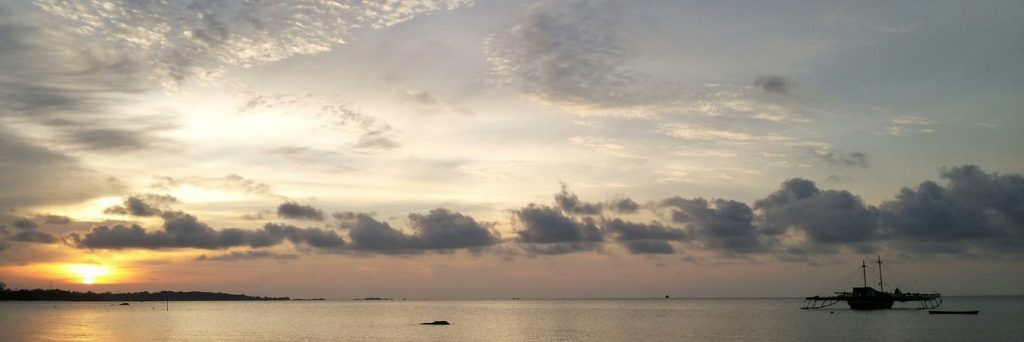The concept of tourism was introduced when early civilizations across the world started to travel for commerce and religious purposes, while some say tourism found its roots in the 17th century.
The Travel and Tourism Industry saw monumental growth during the second half of the 20th century when backpacking around Europe became a thing.
And today tourism industry is one the largest and fastest growing industry and sector responsible for economic growth. While it has great potential to boost the overall economy, strategic tourism planning is required to reap the benefits of the powerful and ever-expanding industry.
Destination and stakeholders must carry out purposeful, comprehensive, and, most importantly, inclusive strategic tourism planning. While we know that tourism destination planning is done to increase the tourism activities in the nation, but it is the responsibility of the authorities to make sure it is culturally appropriate for the citizens residing in it to support long-term success and sustainable growth.
While the trajectory of the tourism industry is unclear due to the covid-19 wave, now is the time to plan and adapt tourism destination planning and development strategies.
What is destination planning?
Destination planning refers to the process of strategically organizing and developing a specific location or area to attract tourists and visitors. It involves a comprehensive analysis of the destination’s resources, market potential, infrastructure, and desired positioning to create a sustainable and successful tourism industry.
How to start planning for destination development?
We need to understand the importance of developing tourism in a way that it provides/adds great benefits to stakeholders while conserving the natural assets for generations. To up the tourism game of a destination will never be a straight path, it will require critical research and strategic tourism planning and defining the best-suited tourism marketing plan for the destination.
The world we all live in is home to infinite unique destinations waiting to be charted and show the world their unique features and assets, and diversity is the strength that we must undeniably safeguard. Saying that safeguarding the undeniable strength is no secret recipe, just a few points to keep in mind while deciding the steps of destination planning.
Latest Posts:
- Abundance Mindset: A Story About Thinking Style And Behavior
- Painting a Rainbow in Belitung Island Indonesia
- Benefits Of Cyber Security And Its Types
Steps of Destination Planning
Step 1 – Comprehensive Destination Assessment: A comprehensive destination assessment is the first vital step any destination or its stakeholder must take to understand the destination and its touristic approach.
Step 2 – Long-term approach: Comprehensive assessment must follow the long-term direction and should leave enough room for unforeseen circumstances, changing trends, and competition.
Step 3 – Record Consumer Behavior: Amid rising ecological consciousness or the ever-increasing presence of technologies, it is a must to record the behavior of the traveler.
When is the right time?
In the hope of economic prosperity and tourist dollars, the rapid expansion of the sector has set destinations to compete on a global scale. Before we hop on this train of the tourism destination planning process.
World travel and tourism council (WTTC), in a comprehensive study, outlines 75+ factors responsible for tourism growth. From tourist attractions and infrastructure to accommodations, connectivity, as well as overall economic development and tourism policies. The factors listed are essential factors
responsible to determine how prepared a destination is and the resulting challenges. It is necessary to keep in mind that the success potential of a destination does not depend on the number of arrivals but on effective resource management.
Meanwhile, as it is important to know when to start, it is equally important to know when to hit the brakes. Uncontrolled tourism development can result in environmental degradation, waste mismanagement, rising prices, overcrowding, social unrest among residents and overall exceeding of destinations’ capacity.
Suggested Read: Event Tourism – Impact and Types
Who should lead the effort?
Government plays an important role in the implementation of appropriate investment decisions, regulations, and policies and in mitigating the negative impact of tourism development.
Good governance should lead tourism destination planning to establish appropriate administrative structures and frameworks for private and public sector cooperation, regulate the protection of heritage, assist in education and training, and will identify clear developmental objectives.
A DMO is a destination’s strategic leader; it directs and coordinates the efforts of various organizations and people to achieve a common objective. The DMO serves as a mediator and advisor, pooling resources, and knowledge to provide key stakeholders with the resources they need to thrive by fostering strategic alliances between the local government, citizens, small enterprises, and NGOs. By bridging the gap between locals and tourists, a DMO will enable cooperative efforts to maximize the economic benefits of tourism.
Suggested Read: Tourism Planning: Importance, Benefits, Types & Levels
Latest Posts:
- Travel Agent Checklist for Seamless Travel Bookings- Important List for You
- Travel Agent Training for Beginners: A Comprehensive Guide
- Find The Best Area to Stay in Washington, DC: 4 Ideal Locations
Effective Tourism Destination Planning FAQ’S
What is destination planning in tourism?
Destination planning in tourism management provides stakeholders with tools to produce competitive and sustainable tourism in the destination. It is organized around destinations’ unique assets, development, management and marketing needs.
What are the five A’s of tourist destinations?
The five A’s of tourist destinations are:
Accommodation
Accessibility
Activities
Amenities
Attractions
What are the three features that make tourist destinations a hit?
The three features that make tourist destinations a hit:
Gastronomy
Culture
Accommodation
What are the main purposes of tourism destination planning?
Destination planning ensures cultural and environmental protection while providing economic growth for local communities.
Who is responsible for tourism destination planning?
Generally, this task is given to the government of the area. The government appoints a Destination Management Organization (DMO) that leads and coordinates the activities of tour operators, travel suppliers and other stakeholders towards a common goal.








